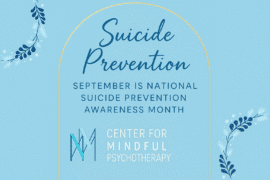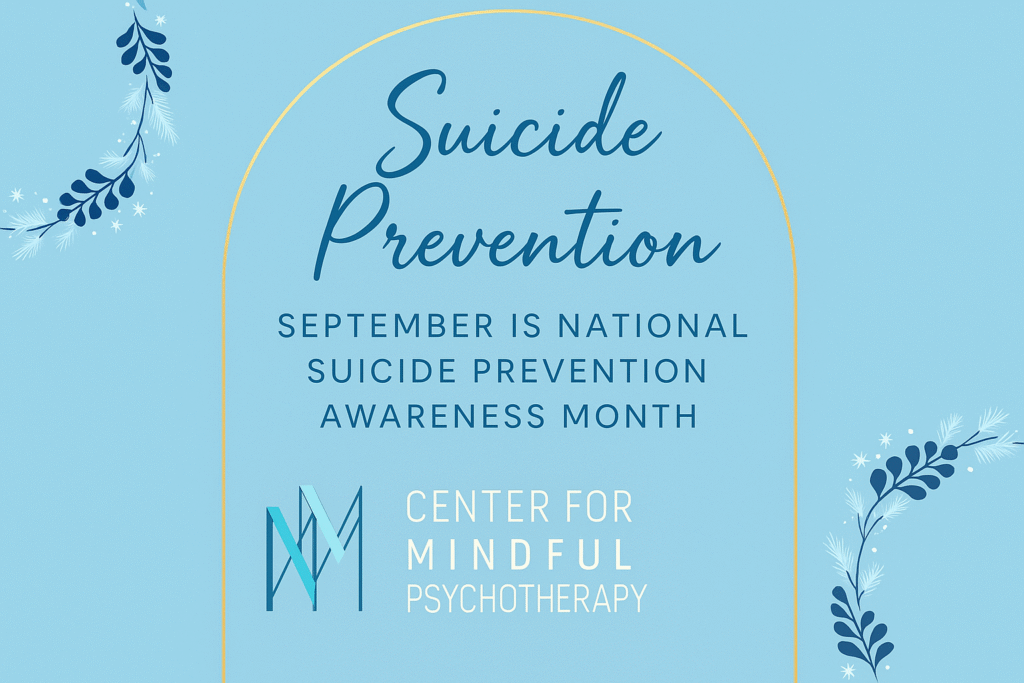
Each September, we pause to reflect, remember, and recommit during National Suicide Prevention Awareness Month. This annual campaign shines a light on suicide, its impact on individuals, families, and communities, and reminds us that prevention is possible.
This month is not only about recognizing the warning signs of suicide. It is also about fostering open dialogue, breaking down stigma, and making sure those who are struggling feel supported and seen. By coming together as a community, we affirm that no one has to carry their pain alone.
Why Awareness Still Matters
According to the 2024 State of Mental Health report, the number of suicide deaths in 2022 was the highest ever recorded in the United States. These sobering numbers highlight an urgent truth: suicide prevention efforts remain as critical as ever.
But awareness is not only about statistics. It is about people … friends, parents, children, coworkers, and neighbors. Every life lost to suicide ripples outward, touching countless others. Every story matters. And every September, we recommit to ensuring that fewer lives are cut short by despair.
A Brief History of Suicide Prevention Month
The roots of Suicide Prevention Awareness Month are found in decades of advocacy, research, and collective effort. Organizations like the American Foundation for Suicide Prevention (AFSP) have led the way in education, outreach, and policy change.
A turning point came in 2004 with the launch of the National Suicide Prevention Lifeline, a free, confidential, 24/7 resource for those in crisis. This service became central to awareness campaigns and has saved countless lives.
In recent years, the Lifeline evolved into the 988 Suicide and Crisis Lifeline, making access even easier. By simply dialing 988, anyone in the U.S. can connect with trained counselors ready to provide support.
September is now formally recognized as National Suicide Prevention Awareness Month, with World Suicide Prevention Day observed globally on September 10. It is a day when people across the world stand together to raise awareness, share stories, and inspire action.
Why This Month Matters in 2025
Suicide is one of the leading causes of death worldwide, but it is not inevitable. With compassion, education, and support, lives can be saved.
This month matters because it reminds us of several truths. Suicide prevention is not only the work of professionals; it begins with human connection … checking in, listening, and showing care. Education is lifesaving because learning to recognize warning signs like hopelessness, withdrawal, or talk of death can help someone intervene before it is too late. Stigma can be dismantled when we talk openly about mental health and create space for healing. And equity must remain central, because suicide does not affect all communities equally. LGBTQ+ youth, veterans, Indigenous peoples, and communities of color often face unique risks that require culturally responsive care.
Awareness month is also a time to acknowledge that for some, these conversations can feel heavy. Survivors of suicide loss and those who live with suicidal thoughts may experience this month differently. Holding space for grief, resilience, and hope is just as important as sharing resources.
Spotlight on the 988 Lifeline
Learn about the 988 mental health lifeline
One of the most significant resources in suicide prevention today is the 988 Suicide and Crisis Lifeline. By calling or texting 988, people in the U.S. can access immediate, confidential support at any time of day or night.
The Lifeline now includes specialized services such as the Veterans Crisis Line (press 1 after dialing 988), Spanish-language support, and dedicated options for LGBTQ+ youth and young adults.
988 is more than a number. It is a reminder that help is always only three digits away.
The Role of Therapists in Suicide Prevention
Therapists are one vital part of the larger suicide prevention network. Their role includes:
- Identifying Risk Factors. Therapists are trained to recognize early signs of suicidal ideation and risk factors such as depression, trauma, or substance abuse. With early intervention, they can help reduce the risk of a crisis.
- Providing Safe Space. Therapy creates a nonjudgmental place where people can voice their pain without fear of being dismissed.
- Building Coping Strategies. From cognitive-behavioral tools to mindfulness practices, therapists equip clients with skills to manage suicidal thoughts.
- Crisis Intervention. In urgent situations, therapists coordinate safety planning, hospitalization, or additional supports to protect life.
- Challenging Stigma. By normalizing mental health care, therapists help clients—and society—view seeking help as strength rather than weakness.
In 2025, therapists also increasingly use teletherapy, somatic practices, and trauma-informed approaches, expanding access and offering new ways to heal.
How You Can Help
You do not have to be a professional to make a difference.
During Suicide Prevention Awareness Month, and every month, you can:
- check in on loved ones and ask how they are really doing
- learn the warning signs and share resources like 988 or local hotlines
- speak openly about mental health in your community, workplace, or family, and challenge the stigma that keeps people silent
- support organizations by donating, volunteering, or amplifying their work.
You Are Not Alone
If you are in immediate crisis, please call or text 988, or dial 911 if you are in danger.
If you are not in immediate crisis but want support, consider connecting with a therapist, joining a support group, or reaching out to trusted friends and family.
Your life matters. Your story matters. And hope is always possible.
If you would like to work with a therapist, you can use our therapist directory to find a therapist or contact us with questions.



